mobile View, to the German Version tap the flag

- Duchy of Modena (and Reggio)
- 1545–1859
- former state on the Italian peninsula
- 1796–1797 part of Cispadane Republic
- 1800–1802 part of Cisalpine Republic
- 1802–1814 part of Italian Republic
- own name: Ducato di Modena e Reggio
• Flags
• Meaning/Origin of the Flag
• Coat of Arms
• Meaning/Origin of the Coat of Arms
• Map of the historical states in Italy
• Numbers and Facts
• History
• Origin of the Country's Name
• Map of the today's regions of Italy
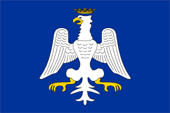
1452–1796,
State flag,
Source, by: World Statesmen



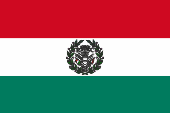
1796–1797,
Flag of the Cispadane Republic,
Source, by: Flags of the World



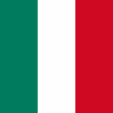
1797–1802,
Flag of the Cisalpine Republic,
Source, by: Flags of the World



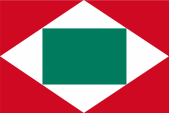
1802–1805,
National flag of the Italian Republic,
Source, by: Flags of the World



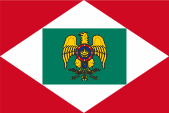
1805–1814,
National flag of the Kingdom of Italy,
Source, by: Von Sodacan Diese Vektorgrafik wurde mit Inkscape erstellt. - Eigenes Werk, CC BY-SA 3.0, Link




1814–1830,
State flag,
Source, by: Flags of the World



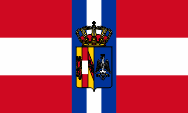
1830–1859,
State flag,
Source, by: Flags of the World



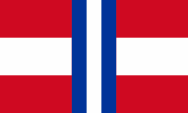
1830–1859,
State flag,
Source, by: Wikipedia (EN)



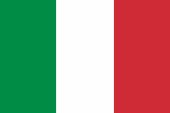
1848,
State flag,
Source, by: World Statesmen






The flag of the Duchy of Modena showed originally the image of the coat of arms of the Este family, a crowned silvery eagle on blue. After Napoleon's troops invaded northern Italy in 1796, the Duchy was abolished and it became part of the newly formed Cispadane Republic (of Napoleon's grace). It included Modena, Reggio, Bologna and Ferrara. Its flag showed three horizontal stripes in red, white and green. In 1797, the Cispadane Republic became united with the Transpadane Republic (Lombardy, Mantua and Western Veneto) to the Cisalpine Republic. Its flag was square and showed three vertical stripes in green, white and red. In 1802 Modena became part of the Italian Republic, which was converted in 1805 into the Kingdom of Italy under Napoleon I. as the king. The flag of this country showed one above the other, a white and a green rectangle, which ist screwed on a red flag. In 1814 (Congress of Vienna), the Duchy of Modena became restored under the Duke Franz IV. of Austria from the Habsburg dynasty, however, the old flag of the Este family was maintained. In 1830 the Duke introduced a new flag, which was used until the end of the duchy in 1859. The flag combined horizontally the house colors of the Austrian Habsburgs, who used the red-white- red shield of Babenberg, and perpendicular with the traditional colors of Modena, white and blue. From 1848 to 1849 raged in almost all of Italy the uprising of the people's movement "Giòvane Itàlia" under Mazzini and Garibaldi, the monarchies were often shortly disempowered. In this phase of rebellion in the Italian States were often used national-italian flags in green, white and red. However, the Italian uprising ended in disagreement.
Source: Wikipedia (D),
World Statesmen,
Volker Preuß


1830–1859,
Coat of Arms of the Duchy of Modena,
Source, by: Wikipedia (D)

The coat of arms of the Duchy of Modena was originally the coat of arms of the Este family. It showed a crowned silvery eagle on blue. This heraldic image then appears again in the heraldry of the coat of arms of the Dukes of Modena from the House of Habsburg, because they hertied the land in the year 1806. Thus, the heraldry of the Austrian Habsburgs is combined with the heraldry of the Este family in a divided shield since 1830.
Source: Wikipedia (D),
Volker Preuß

all state denominations in English:
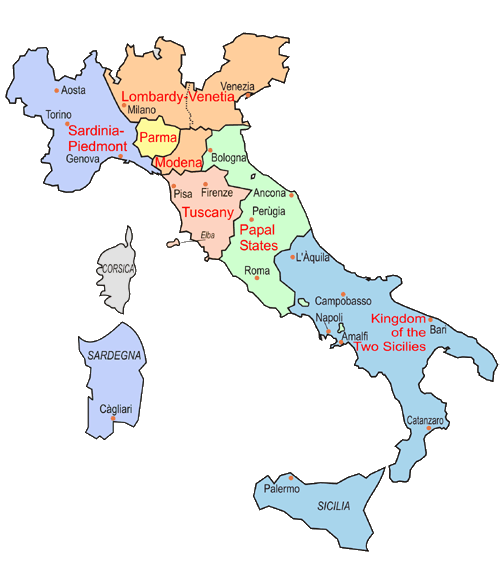
Source: Volker Preuß

Area: 2.367 square miles (ca. 1858)
Inhabitants: 600.000 (ca. 1858)
Density of Population: 253 inh./sq.mi. (ca. 1858)
Capital: Modena
Sprache: Italian
Source: Meyers Konversationslexikon

antiquity · in the region settle Raetians, Umbrians and Celts
since 5th cent. B.C. · immigration of Etruscians from the Alpes
since 225 B.C. · Roman conquest, establishment of the Province of Gallia Cisalpina
89 B.C. · the Province of Gallia Cisalpina gets incorporated into the Province of Italy
452 · Hun's invasions
476 · dismissal of the last Roman emperor Romulus Augustulus, end of the (West)Roman Empire, the today's Lombardy belongs until 493 to the Empire of the Odoaker
489 · conquest of the region by the Eastern Goth
535 · conquest by Byzantium (East Rome)
568/569 · conquest and settlement by the Langobardes (to the Lombardy)
774 · conquest by the Franks
781 · incorporation of the Lombardy into the Frankish Empire of the Carolingians
ca. 800 · immigration of the ancestors of the d'Este family
843 · at the division of the Frankish Empire comes the Lombardy to the Kingdom of Italy
888 · after the vanish of the Carolingians disintegrates the Region into small states
961 · Otto I. brings Modena to the German Kingdom
ca. 1000 · Modena joines the Lombardian Alliance against the German Emperor (Milan, Bergamo, Lecco, Cremona, Mantua and Brescia)
1056 · Alberto Azzo II., builts near the town of Este a castle of the same, and calles himself after it, Alberto Azzo d'Este
1167 · the Lombardian Alliance takes position against the German Emperor Frederick I. (Barbarossa)
1183 · recognition of the independence of the Lombardian Alliance
ca. 1215–1350 · fights between Ghibellines (emperor's party) and the Guelfes (pope's party)
1289 · establish of the County of Modena, the feud gets the family d'Este
1336 · acquisition of Reggio
1452 · the German Emperor Frederick III., elevates Borso d'Este to the Duke of Modena and Reggio
1471 · the family d'Este gets the city of Ferrara as a fiefdom by the Pope
1597 · extinction of the d'Este family, Cesare d'Este - an illegitimate descendant of the family - takes Modena and Reggio, Ferrara comes back to the Pope
1633 · Cesare d'Este Alfonso III. receives from Emperor Ferdinand the city of Correggio as a fiefdom
1702 · Spanish War of Succession, Duke Rinaldo d'Este is exiled by Spanish and French troops
1703–1706 · occupation by French troops
1707 · return of Duke Rinaldo
1711 · acquisition of the Duchy of Mirandola
1734–1736 · occupation by French troops
1737 · acquisition of the Duchy of Novellara
1796 · the Duchy of Modena is occupied by French revolutionary troops, Duke Hercules III. Rinaldo is dismissed, Modena becomes annexed to the Cispadan Republic
1797 · merge of the Cispadan Republic with the Transpadane Republic (Lombardy, Mantua and Western Veneto) to the Cisalpine Republic
1801 · Peace of Luneville, peace treaty between France and the Holy Roman Empire of the German Nation, the left bank of the river Rhine comes to France, Duke Hercules III. Rinaldo receives - as compensation for the loss of his duchy - the Breisgau, and transfers it to his son-in-law the Archduke Ferdinand of Austria
1802 · Modena is part of the Italian Republic (1805-1814 Kingdom under Napoléon I.)
1805 · Modena is part of the Kingdom of Italy under King Napoleon I.
1806 · Peace of Pressburg, peace treaty between France and Austria, Ferdinand of Austria loses the Breisgau and dies, de jure the inheritance comes to the House of Habsburg
1814 · Congress of Vienna, restoring of the Duchy of Modena under Franz IV., the son of Ferdinand of Austria, as House of Austria-Este a sideline of Habsburg, including the Duchies of Massa and Carrara
1831 · July Revolution in France, then revolt in Modena, the Duke is forced to flee, but returns in the same year with Austrian troops
1847 · Acquisition of Fivizzano
1848 · Acquisition of Guastalla
1848 · in almost all of Italy uprising of the people's movement "Giovine Italia" under Mazzini and Garibaldi, Charles Albert of Sardinia-Piedmont sets himself at the top of the uprising, riots in Modena, Duke Franz V. flees, but returns with Austrian troops back to power, the Italian uprising ends in disagreement
1859 · Italian war of independence against Austria, Duke Franz V. turns to the side of Austria, roits in Modena, formation of a provisional government and a national assembly, the Duke becomes deposed and flees to Austria
1860 · annexation of Modena to Sardinia-Piedmont
17th of March in 1861 · coronation of Victor Emmanuel II. of Sardinia-Piedmont to the King of the Kingdom of Italy
1875 · death of Duke Franz V.
1947 · establish of the Emilia-Romagna region as an administrative unit of Italy, it includes the territories of the former states of the Duchy of Parma, the Duchy of Modena and of the the Papal States (Patrimony of Peter)
Source: Wikipedia (D),
Atlas zur Geschichte,
World Statesmen

The city of Modena was founded by the Etruscans as "Mutina". The meaning of the name "Mutina" is unclear.
Source: Handbuch der geographischen Namen

all denominations in Italian
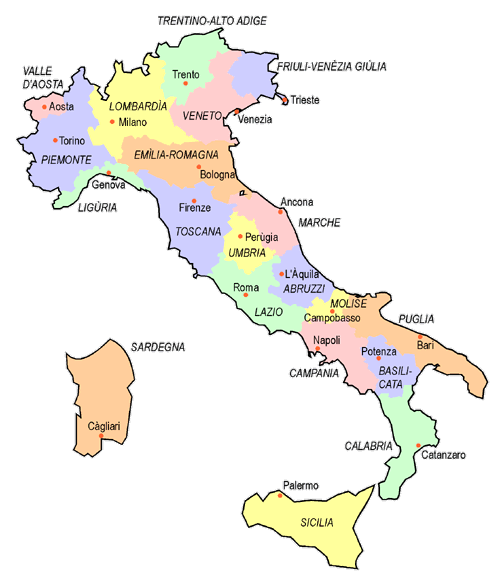
Source: Volker Preuß


![]()































